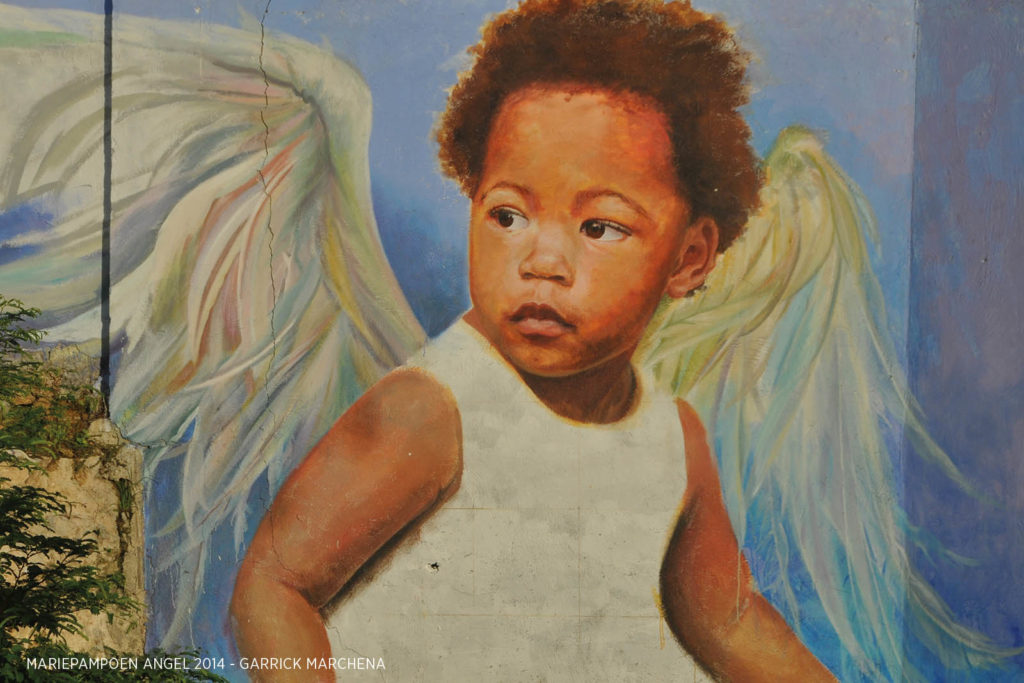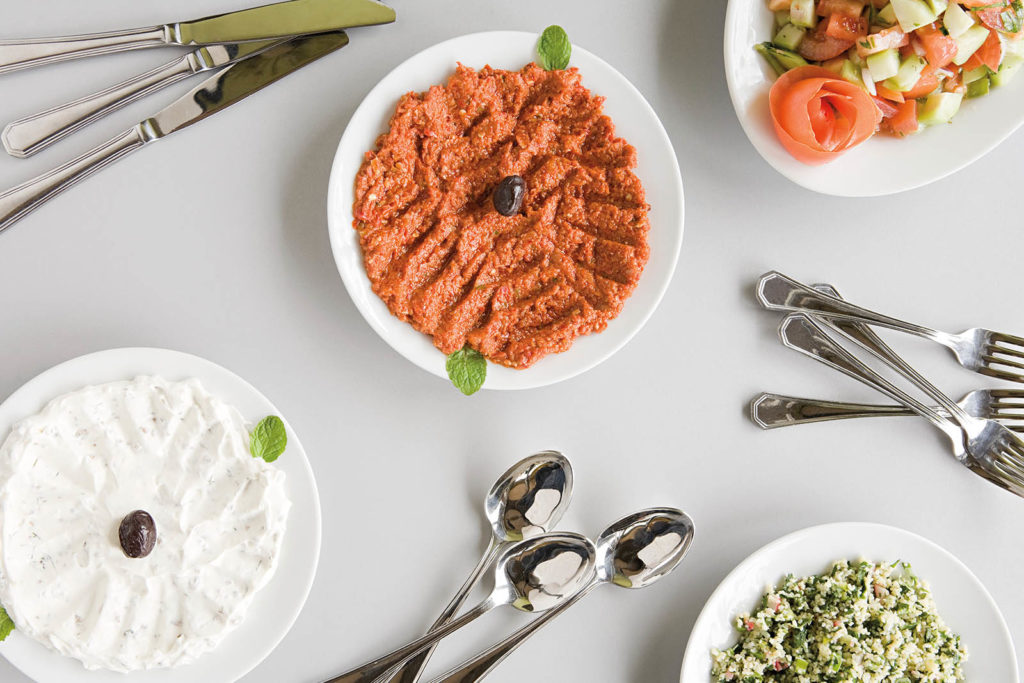Walking the pedestrian-only cobbled streets and alleys of Curaçao’s capital Willemstad, a UNESCO World Heritage City, it’s easy to forget you’re in the Caribbean and not a small town somewhere in the Netherlands. Buildings here, showcasing well-preserved Dutch colonial architecture, are painted a palette plucked straight out of a basket of Easter eggs. Pops of pink, lavender, teal, and yellow blend to create a candy-coated rainbow that was made for photo ops.
Aside from its Instagram-worthy architecture, Curaçao is the Caribbean with a distinct European flavour. Sure, there are beaches (35 in fact), but the tiny island 60 kilometres off the coast of Venezuela is a destination on the rise thanks to its burgeoning art scene, upmarket shopping, European influence, and eclectic mix of neighbourhoods, each with their own personality and historical significance. The “C” of the ABC Islands (which also include Aruba and Bonaire), Curaçao has a population of roughly 150,000, comprised of more than 55 different cultures, including African, Dutch, German, Indian, Spanish, and Portuguese – which shapes the unique look and feel of the island.

A COLOURFUL AND ECLECTIC CAPITAL
Willemstad is divided by St. Anna Bay into two distinct districts: Punda (known as “the point”) to the east and Otrobanda (or “the other side”) to the west. The east side also encompasses the districts of Scharloo and Pietermaai. Punda is by far the busier side of the island, with Otrobanda offering a quieter, more local vibe. The winding, vibrant streets of Punda were made to be explored without an agenda. You’ll want to linger, allowing time to slowly discover what’s around each corner, stopping when something catches your eye, be it a shop, café, swath of street art, or a particularly photo-worthy building.
It’s also Punda where you’ll find the Handelskade, that historical (and oft-photographed) waterfront street lined with colourful colonial buildings–a view best admired from the west side. Otrobanda may not have the same sheen as its more popular cousin to the east, but there’s a different type of charm here and the pace is refreshingly slower.
Just a short walk from the centre of Willemstad is the Pietermaai District. Once left to fall into disrepair, the area is now enjoying a resurgence, complete with funky bars, boutique hotels, cafés, and restaurants worthy of any hipster strip in Brooklyn or on West Queen West.
The two sides of the island are connected by the Queen Emma Pontoon Bridge, a floating pedestrian bridge that gracefully opens to one side to allow ships to enter and leave the bay, something that is oddly captivating to watch. In fact, sitting in wait for the bridge to swing open is a legitimate activity in Willemstad, and one that is best done with an icy beer in hand, relaxing on one of several patios nearby.

AN ISLAND OF ARTISTS
The sherbet-hued buildings of Willemstad aren’t the only striking aspect of Curaçao: art is everywhere on the island – and not just in galleries. The Caribbean might not be the first place that comes to mind when you think about art, but it’s all over Curaçao, lighting up alleys, brightening the sides of buildings and catching the eye in unexpected corners. The twisting streets of Punda are especially awash with street art, much of which can be found along the Keukenplein, the Smallesteeg and the Windstraat.
On the Windstraat, you’ll find the colourful, sculptural murals created by one of Curaçao’s most well-known local artists, Nena Sanchez. Sunflowers, fishes, and butterflies quite literally pop off the walls of the alley, something that makes you feel as if you’ve entered some sort of whimsical fantasyland (think Dr. Seuss crossed with Alice in Wonderland). A Curaçao native, the self-taught Sanchez is directly influenced by the island, her paintings deftly depicting the island’s bold colours.
Meanwhile, artist Garrick Marchena created his first street mural “Urban Angel” in 2009. Today, Marchena’s strikingly realistic murals and head-tripping 3D art can be seen all over the streets of Willemstad and elsewhere on the island.
If you prefer your art in a gallery setting, Gallery Alma Blou is the oldest and largest gallery on Curaçao and showcases the work of both local and Caribbean artists. Housed in a 300-year-old plantation house, works range from painting and sculpture, to ceramics, jewellery, and wood carvings. Make sure to stop by the pretty back patio for tea.

BEACH, WITH A SIDE OF NATURAL WONDER
A beach is a beach, right? Not in the case of Playa Knip, a local favourite and one of the best beaches on Curaçao. The sand is soft, sure and the water shockingly clear, but it’s the particular shade of blue and the way it plays off the gleam of white sand and surrounding green hills that make the whole setting especially postcard-worthy.
Jan Thiel Beach is much livelier thanks to the extensive complex of restaurants, shops, and resorts that have popped up around it, creating a more energetic atmosphere than at Playa Knip. The water here is shallow and inviting, and beach chairs, loungers, and hammocks are plentiful.
Shete Boka National Park on the island’s rugged north coast offers a whole new way to experience Curaçao’s coastline. Here, soft sand is replaced by jagged outcroppings of rock where violent waves crash against several inlets (boka means inlet) creating sky-high sprays of frothing water. Nowhere is this more awe-inspiring than at Boka Pistol, where waves crash so hard, that as the name suggests, it sounds like a pistol being fired.

ISLAND EATS: EATING LIKE A LOCAL
Curaçao may be small, but the variety of food on offer speaks to the vastly multicultural population, something that makes for a diverse mix of restaurants, flavours and dishes.
If you want to eat local, the best place to start is at Plasa Bieu, also known as the “old market” in Punda. Individually operated stands each offer a range of local favourites prepared on-site, including various stews (goat, chicken, or beef being most common), fresh fish like red snapper or grouper, kadushi (cactus soup), funchi (polenta) and pumpkin pancakes. Being a vegetarian traveller can be tough, but I was able to find several simple but filling options in the form of fried plantain, beans and rice, and salad. Those aforementioned pumpkin pancakes are surprisingly addictive with their subtle sweetness and fluffy texture.
You can’t get more local than diving into one of the island’s more unique specialties: iguana. This vegetarian chose to opt out, but one of the best-known spots to sample some is at popular local eatery Jaanchie’s Restaurant on Curaçao’s west side where the reptile is served up in a hearty stew. Apparently it tastes just like chicken.
